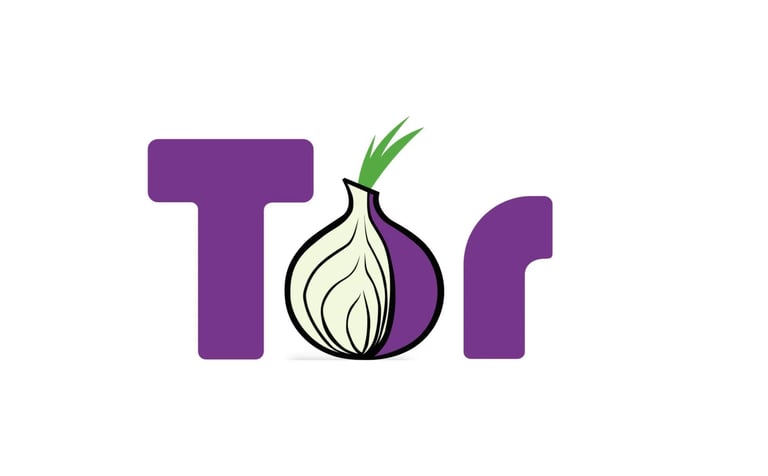Monero: Advanced Privacy in Cryptocurrency
Discover how Monero enhances cryptocurrency privacy through advanced cryptographic techniques like ring signatures, stealth addresses, and more. Explore its features compared to Bitcoin, potential ...
TECHNICAL
1/28/20257 min read


How would you feel knowing every transaction you make is known by anyone who knows your name and has an internet connection
Since Bitcoin’s launch, there has been demand for a digital currency with better financial privacy features. Bitcoin is considered pseudonymous because all transactions are recorded on a public ledger that anyone can trace. While addresses are not directly tied to real identities, once a Bitcoin address is linked to someone (for example, through a cryptocurrency exchange), their entire transaction history becomes visible. To address these privacy concerns, Monero uses additional key privacy techniques including Ring Signatures, Stealth Addresses, RingCT and Kovri in order to obfuscate the transactional data from governments, corporations and other prying eyes. The mechanics of these privacy features will be explained within the article and how they combine to make Monero one of the most powerful privacy coins globally
Generating Stealth Addresses
Within the Monero blockchain there are two separate types of private keys held by the wallet holder, one analogous to a private key on a regular decentralized blockchain called a spending key, and another which allows a user's transactions to become visible on the obfuscated blockchain called a view key, of which each have a public and private version. On the bitcoin blockchain, the private key can generate public keys, similarly on the Monero blockchain, the spending key generates something called a stealth-meta-address, which functions as a set of instructions to generate one time stealth addresses belonging to the wallet holder without any link to the stealth-meta-address
Stealth address - a real world analogy
Transacting on the Monero blockchain can be thought of as hiding a key within a fake rock and giving the recipient a treasure map in order to locate this key, the key can be utilised to unlock a safety deposit box containing a certain amount of money which the sender has deposited within the box
On Monero this "map" or thing which alerts the receiver that they have funds that they own can only be found by scanning the blockchain utilising the private view key owned by the recipient. This will alert them if there are funds on a stealth address which has been generated from their stealth-meta-address. Once they know there are funds, they can then generate a private key associated with that specific stealth address in order to spend them anonymously and unlinked to their "public key"
Private transaction example
Stealth addresses are a key part of the 4 main privacy technologies of the Monero system. If Alice would like to send Bob some Monero, Bob will share his stealth-meta-address which is a set of instructions used to generate a one time stealth address in combination with Alice's spending key. This stealth address will then be used as the destination address for Alice to send Monero to Bob, without a direct link between Bob and Alice as there is no connection to an outsider between the generated stealth address and the stealth-meta-address. Bob controls the private keys to this generated stealth address and can spend the contents without any link to Bob's stealth-meta-address
Ring Signatures
A ring signature is a cryptographic technique used to obscure a transaction by mixing it with a set of decoy transactions. On Monero, these decoys are real historical transactions pulled from the blockchain, making them appear just as valid as the new transaction. When the transaction is broadcast, it forms a 'ring' of digital signatures, and there’s no way to determine which one is the real transaction initiated by the sender.
Imagine releasing a collection of marbles, each representing a transaction. Among these marbles, one has a tiny black rock hidden inside, representing the real transaction. The other marbles are decoys—historical transactions that look just as valid. While we know the hidden rock marble (real transaction) is somewhere in the collection, there’s no way to tell which one it is just by looking. This ensures complete privacy for the sender, as observers can’t trace the transaction back to its origin
How the Decoys Cannot Be Deciphered From the Real Transaction
Ring signatures obscure the sender by mixing it with old historical transactions that have already occurred on Monero, which make it much harder to determine which was the real transaction and which ones were historical outputs as there is now a "ring" of digital signatures, of which only one of them is the new initiated transaction. This can be effective due to Monero being a private blockchain in which a view key is needed to see a user's transactions, making this privacy technique effective
RingCT furthering on Ring Signatures
RingCT stands for Ring Confidential Transactions and it builds upon the concept of ring signatures with added cryptography, ensuring the quantity of Monero sent stay private between the sender and receiver. It uses a cryptographic technique called Pedersen commitments to ensure the amounts are kept hidden
Pedersen commitments are a powerful cryptographic tool for ensuring privacy and integrity in various applications, particularly in privacy-focused systems like Monero. They allow users to commit to values while keeping them hidden and enable secure computations on committed data
Tor Overview - Similar objectives to Kovri
Kovri is a system similar to Tor with some key differences suited for the Monero blockchain. To give an overview of Tor, it can be thought of preventing being able to link your internet traffic back to your computer or IP address. It does this by sending a layered bunch or requests to a server (node), the first server is only able to "peel" off the first layer of encryption as it only has the key to do so, upon peeling the layer, there is a bunch of encrypted text along with instructions of which server to route it to next, so the server routes it on. Upon reaching the next server a similar process occurs in which another layer gets "unwrapped" as this server has the key to unwrap another layer, but not the contents within the "layer". Eventually the final request for the final server is to pass the request onto a website in which the user would like to access. The final layer is known as the exit node and the first layer known as the guard node in which precautions need to be taken as there is more vulnerability here. Tor obfuscates the link between the computer that requested it and the server, any monitoring software attempting to track the IP which made this request. This layer concept is why Tor is commonly known " The Onion Router"
Garlic Routing - Kovri
Kovri has some key differences to Tor as it is custom build for Monero applications on top of the I2P protocol (invisible internet project). Instead of onion routing in which the layers are peeled back by each node to finally reveal the user's request, Kovri utilises garlic routing in which inputs (garlic cloves) are collected from a variety of sources and then bundled up (whole garlic) into a single encrypted bunch of data (packet) before being separated back into their segments and distributed to their separate destination addresses. This is an improved version of onion routing
Tor has a vulnerability in which the exit node (final node in the layering) sees the data request from the user, so it is not end to end encrypted, but rather obfuscates the pathway through layering, blocking the direct link to the user. Garlic routing takes this a step further by ensuring end to end encryption. Each clove within the garlic bulb is encrypted separately and contains its own delivery instructions. Only the intended recipient can decrypt and read the message, unlike on Tor where the last node decrypts the user's request. Keep in mind Tor and Kovri have differing applications, as Kovri is intended to be used on a peer to peer system like the Monero network
Unidirectional Tunnels - Kovri
Kovri employs unidirectional tunnels, much like separate pipes for water supply and drainage in a house. In I2P, data flows through a series of interconnected nodes, but each connection is designed for one-way traffic only. This is akin to having separate pipes for incoming water (like a water supply line) and outgoing wastewater (like a drain). This unidirectional flow makes it more difficult for attackers to track the origin or destination of data within the network, further obfuscating IP addresses from prying eyes
Vulnerabilities Within Monero
Finland's National Bureau of Investigation (KRP) has reportedly claimed success in tracking transactions involving Monero, a cryptocurrency renowned for its strong privacy features. However, experts suggest that such tracing is more likely the result of user errors in operational security—such as reusing addresses or failing to properly anonymize their activities—rather than a fundamental flaw in Monero's protocol
As hacking and surveillance technologies evolve, so too does Monero's security framework. Over the years, Monero has consistently rolled out updates and technological enhancements to strengthen its privacy features, ensuring it remains a leading choice for those seeking financial anonymity. This ongoing commitment to innovation suggests that Monero will continue to adapt and thrive as a vital tool for privacy in the digital age
















Get in Touch
We'd love to hear from you! Reach out for questions, feedback or other enquiries
Reach
info@bitesizedblockchain.com
Bite Sized is not affiliated with these brands in any way





Grab your daily web 3 byte
